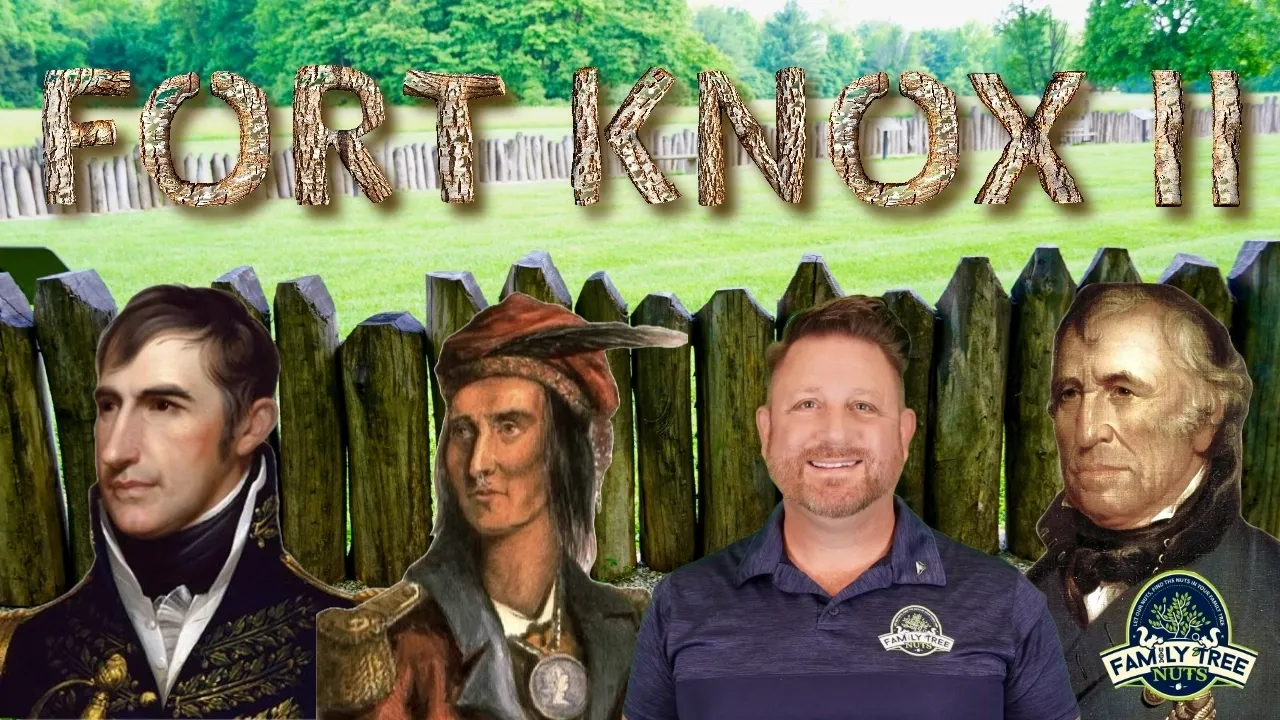
FORT KNOX II & FRONTIER FORTS OF VINCENNES
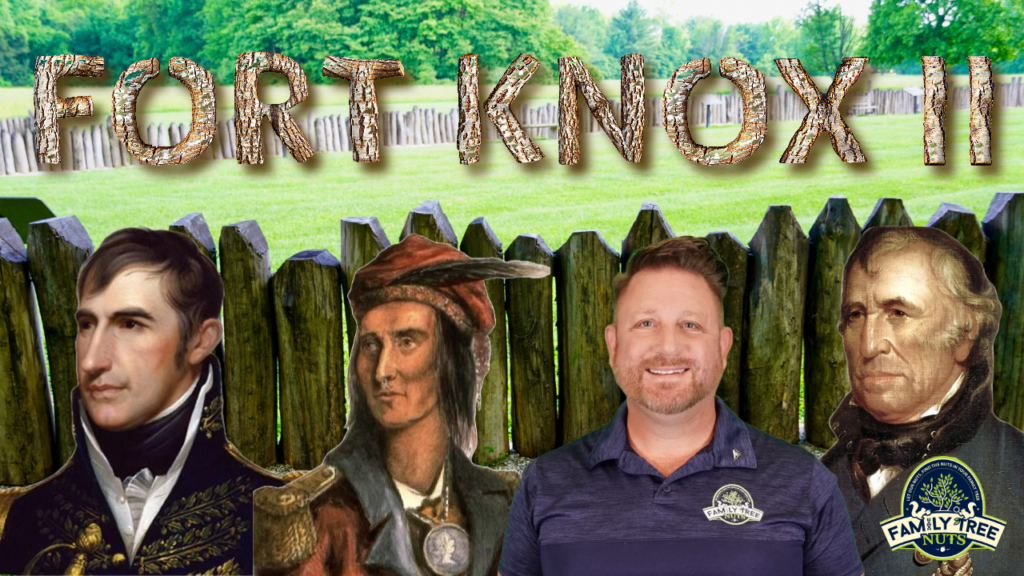
This tiny fort was a military outpost from 1803 until 1813. Captain and eventual President Zachary Taylor commanded the fort and strengthened the walls. It is the Site where the Indiana Territorial Governor, and later President William Henry Harrison mustered his army in before the battle of Tippecanoe where he defeated Tecumseh’s brother Tenskwatawa, also known as The Prophet, thus ending the threat of an Indian Confederation. In this video I’ll explain the history and show you around modern-day Fort Knox II.

Recently visited Fort Knox II and were shocked to learn all that happened here, and I wanted to share the history with all of you. At Family Tree Nuts, we build family trees for clients that either don’t know how, don’t have the time, or don’t want to pay those expensive membership fees. We also make history videos all over the United States, and a few countries, so if you like videos like these, be sure to Subscribe to our channel.
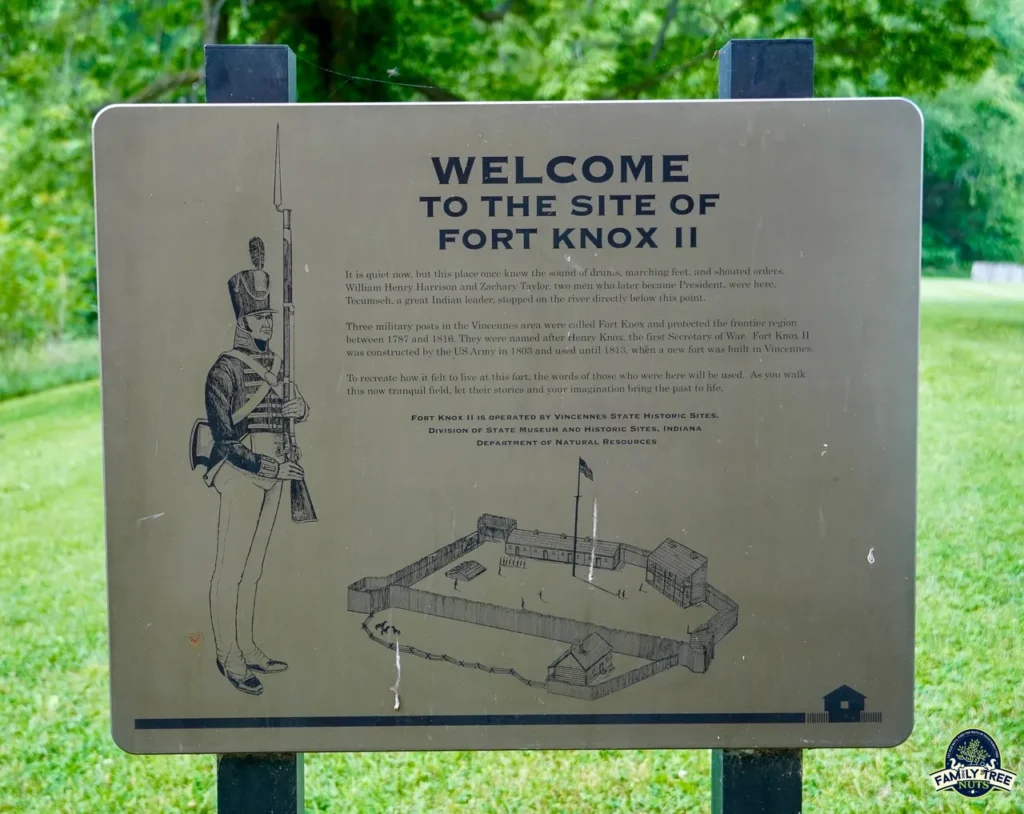
To understand the importance of Fort Knox II, we have to discuss the history of the European forts here in the area. Now, I’ve got to keep this part short, so I’ll just be hitting the highlights. The story begins all the way back in 1702, when the French set up a trading post on the Buffalo Trace and the Wabash River, near the modern-day city of Vincennes, Indiana. Beginning in 1731, Francois-Marie Bissot, Sieur de Vincennes established a fort here to protect the fur trapping business. It was named Fort Vincennes in his honor, and a few years later in modern day Tennessee, or Mississippi, he was burned at the stake by the Chickasaw.
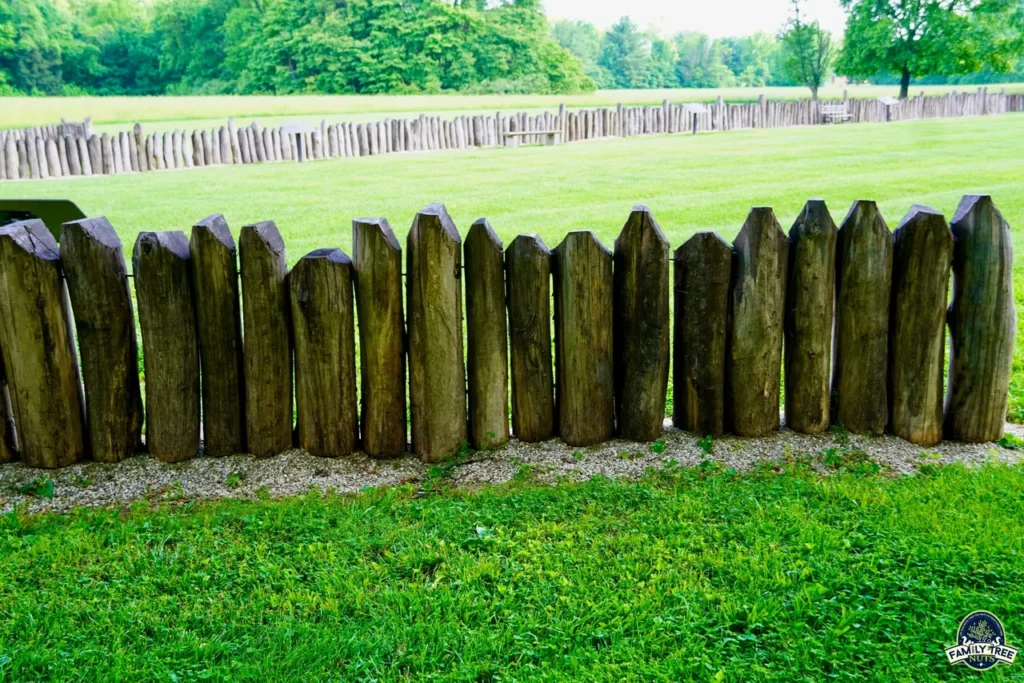
After France was defeated by the British in the French and Indian War, the fort was ceded to the British and was renamed Fort Sackville, in honor of Major General and politician Lord George Sackville. However, the British didn’t have the funds to man the fort and it was abandoned and fell into disrepair.
During the Revolutionary War, then Lieutenant Colonel George Rogers Clark lead a force of many Kentucky frontiersmen to take the fort. He left a small garrison to guard it while he took his men to take other outposts in the Illinois Country under British control such as Cahokia, and Kaskaskia. While Clark was on his mission, Lieutenant Governor Henry Hamilton led a force from Fort Detroit and took Fort Sackville back under British control. Hamilton was hated on the Kentucky frontier and earned the nickname “The Hairbuyer” for paying Indians for white scalps. In the winter of 1779, GRC took the fort back under American control and sent Hamilton all the way back to Williamsburg, Virginia where he was held as a prisoner of war. Clark renamed the outpost Fort Patrick Henry after Virginia’s governor.
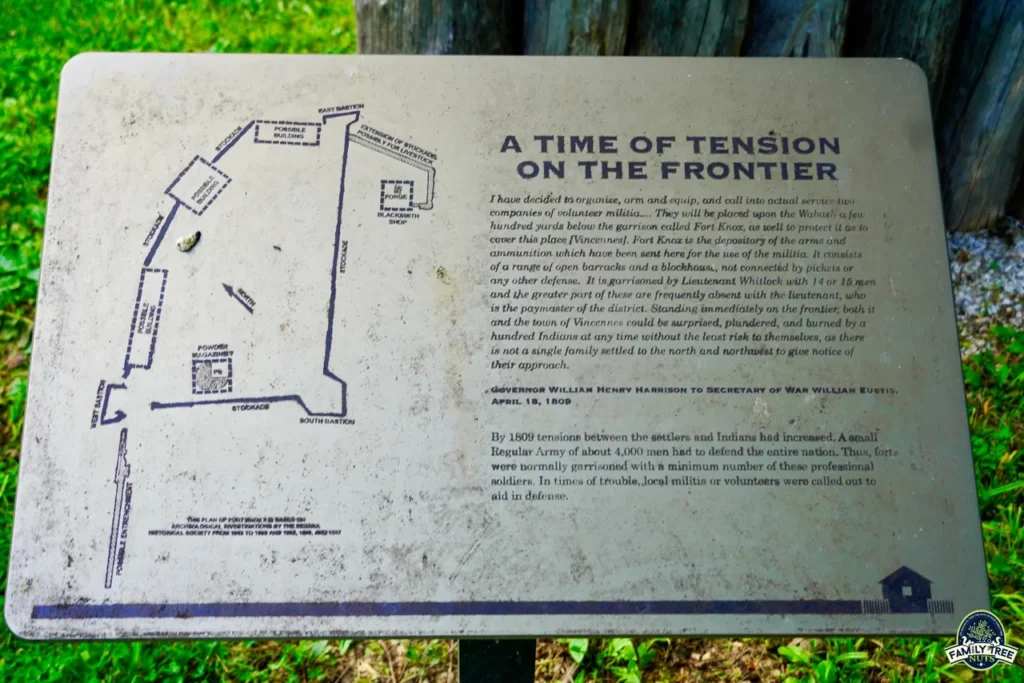
Fast forward to 1787, when the American Army built a new fort just a few blocks from the old Fort Sackville and named it Fort Knox after the U.S. Secretary of War Henry Knox. The locals in the area refer to this fort as Fort Knox I. A time of peace followed between the Americans, British, and native tribes but since the fort was the westernmost outpost for the army, and was literally in the middle of the frontier, the local population constantly clashed with the soldiers from the fort. I can understand this, when I was in the Marines and on ship, we would hit ports, and often the local business owners were not happy to see a bunch of rowdy young Marines pour into their town. In 1796, the soldiers were not allowed to go more than one hundred yards from the fort. Indiana Territorial Governor and future President of the United States William Henry Harrison knew that he had to get those young soldiers out of the town of Vincennes.
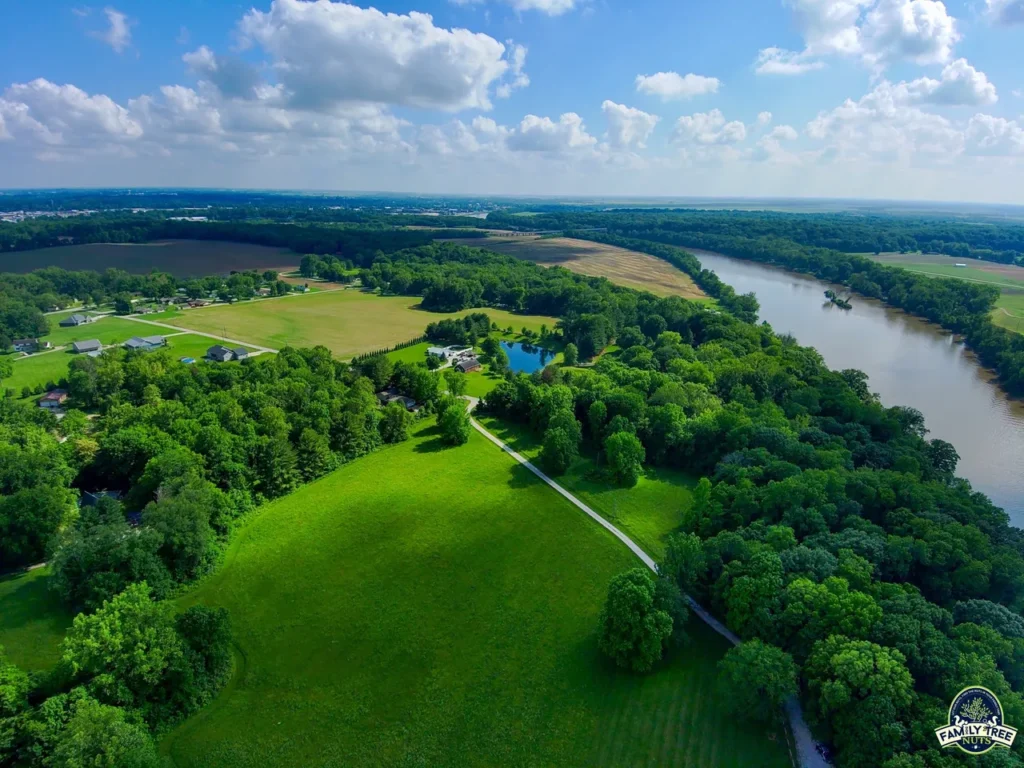
In 1803, Congress approved $200 to construct a new fort about three miles up Wabash River, at a site called Petit Rocher, which was a high point with a good view of the river. The fort maintained its name of Fort Knox, but the locals began to refer to it as Fort Knox II.
Tensions between white settlers and the Indians began to grow, and in 1809, Governor Harrison commissioned the formation of two companies of militia made up mostly of men from Ohio and Kentucky to help defend Vincennes if needed. The duty for the militia was hard and mundane, desertion became a tremendous problem at the fort.
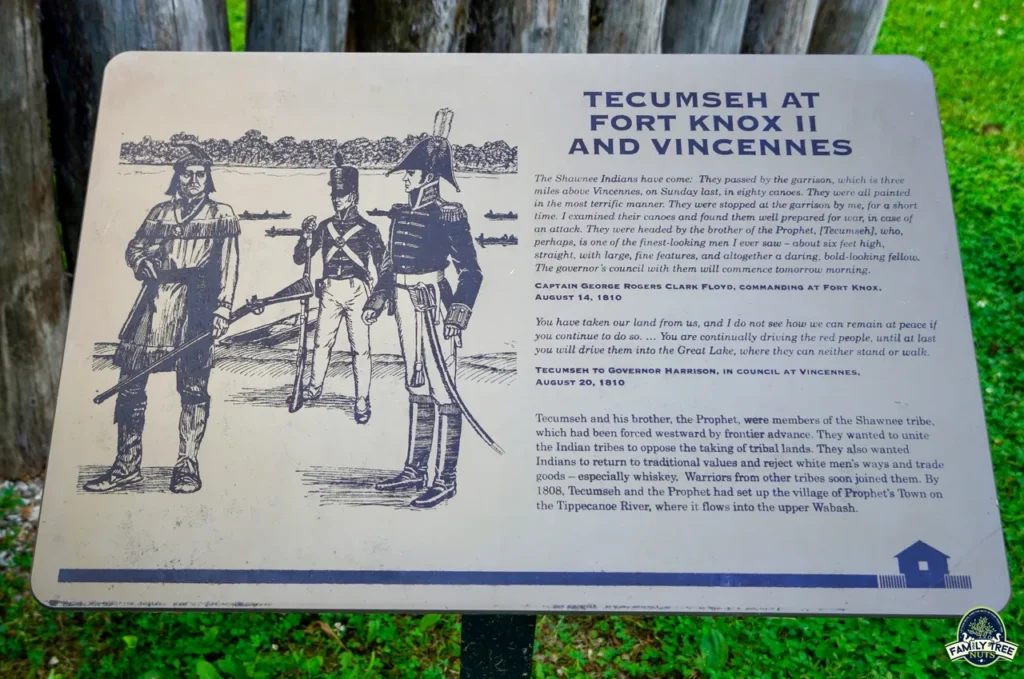
A big moment in the history of the fort was in August of 1810, when Tecumseh with hundreds of warriors in about eighty canoes passed by the fort and were examined before continuing the journey to meet with Harrison on the lawn of his home, Grouseland. The forts commander Captain Floyd wrote that Tecumseh was “perhaps one of the finest-looking men I ever saw – about six feet high, straight, with large, fine features, and altogether a daring, bold-looking fellow”.
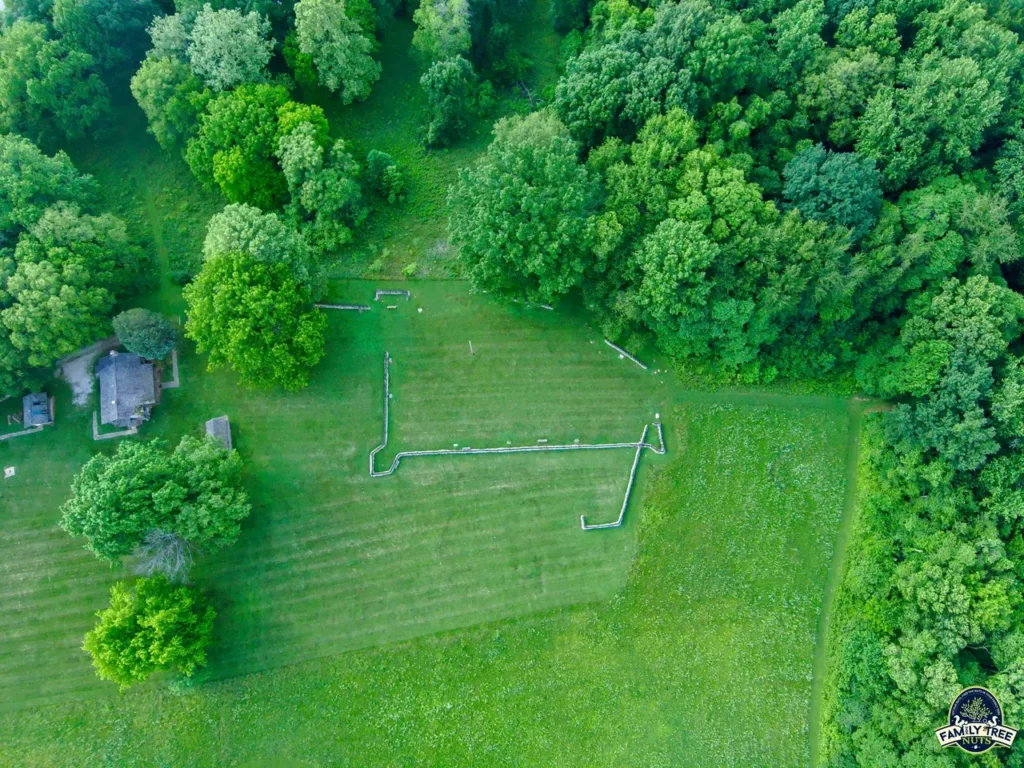
One of the most shocking events at the fort happened in July 1811.The forts Commander Captain William Posey came into a disagreement with his second in command Lieutenant Jennings. Posey challenged Jennings to a duel and shot Jennings dead. He then fled the fort and turned himself in in Louisville but continued to serve in the army and rose to the rank of Lieutenant Colonel in the War of 1812. Posey’s replacement at Fort Knox II was then Captain and future President of the United States Zachary Taylor who was commended for strengthening the forts defenses.
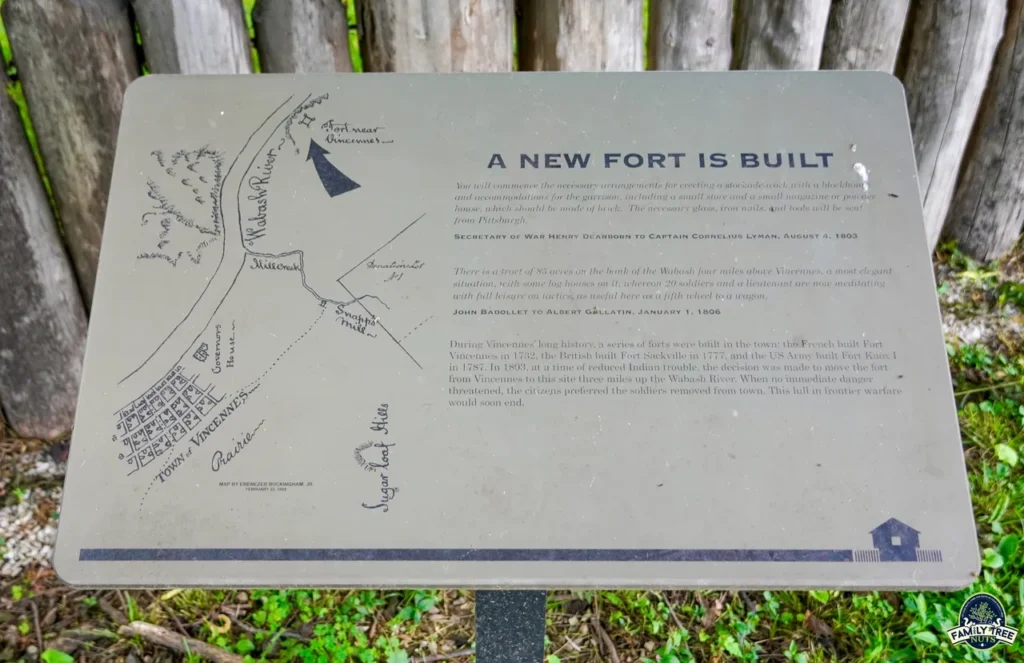
Later in the year, Fort Knox II was the muster location for Harrison’s troops before heading off to provoke into battle Tecumseh’s brother Tenskwatawa, better known as “The Prophet”. The forces met at the Battle of Tippecanoe where the Indian forces were defeated and thus forever destroyed Tecumseh’s dream of an Indian Confederation. After the battle the troops returned to Fort Knox II, where many died of their wounds and are buried there today.
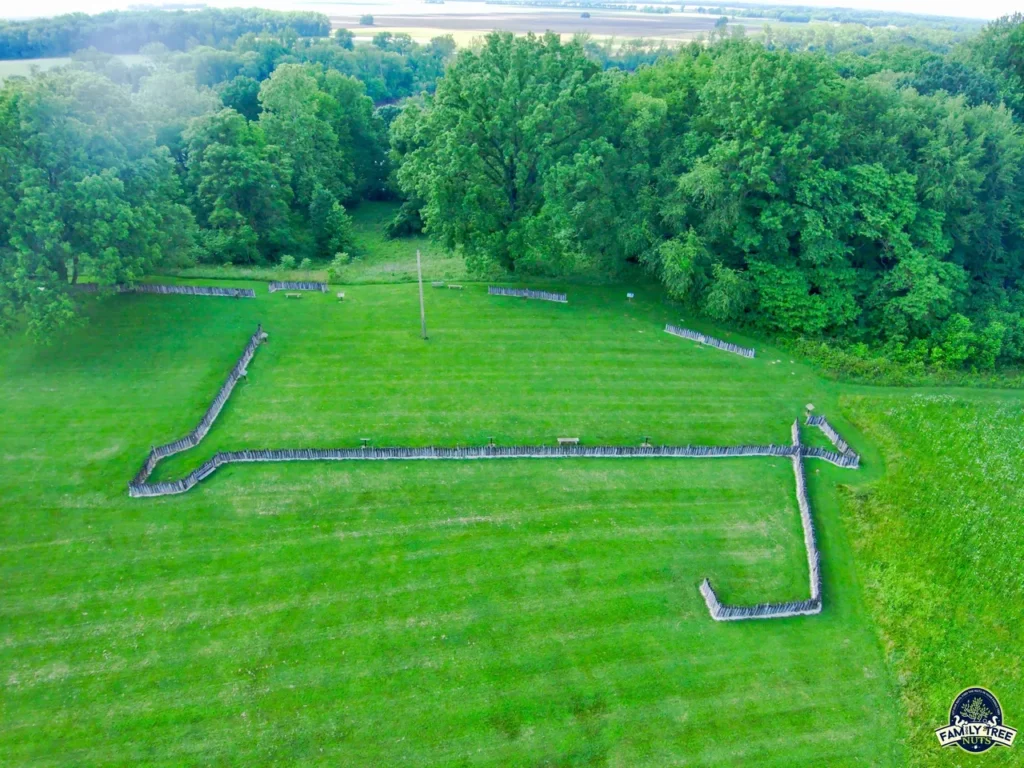
Next came the War of 1812, and Vincennes was a prime target for the British and their Indian allies. The army knew that Fort Knox II was too far away to offer protection to the city, so in 1813, the fort was disassembled, floated down the Wabash River and reassembled very near the original fort location.
After the war, the tensions flared up again between the town residents and the soldiers. Most of the Indians had moved further north, so in 1816, it was determined that it would be best to move all the men to Fort Harrison, in modern-day Terre Haute, Indiana.
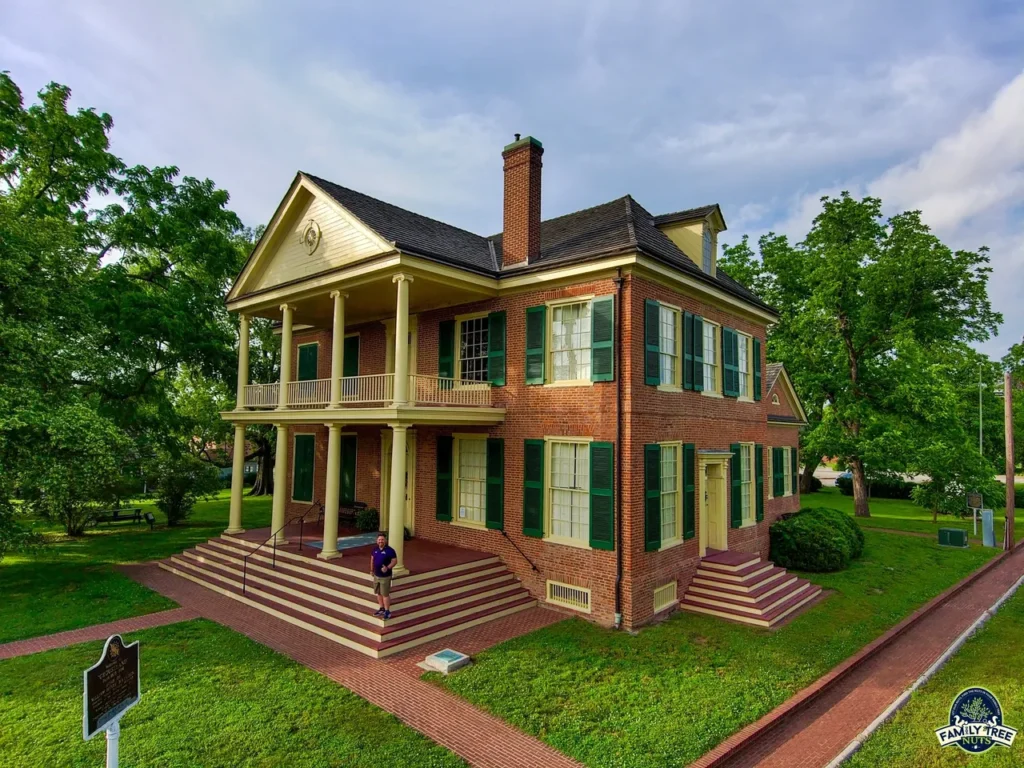
Today the site of Fort Knox II is a park and where the fort once stood is outlined in waist high palisades, along with several informative signs about the fort. One can walk the grounds and imagine what it was like to be stationed there and the thoughts of the men who would soon march off to meet such a formidable force.
So now we know some of the rich history of Fort Knox II and its impact on American History. What do you think? Did you know that this historical treasure existed? What are your thoughts about the major events that took place here? Have you ever been here, or do you now plan to visit? What is your overall opinion about William Henry Harrison? We’d love to hear what you have to say in the comments below.
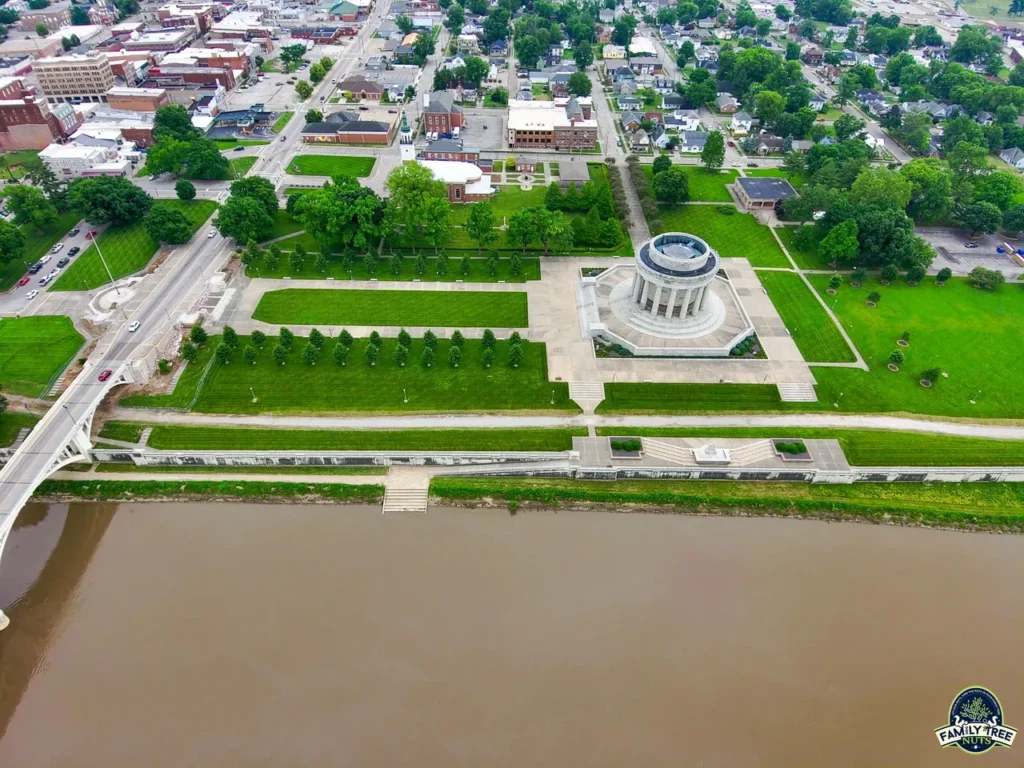
While you are in Vincennes, be sure to visit the other historical locations that it has to offer. The city has many original historical buildings that are still standing and are museums themselves. Downtown is home to many historical markers and statues that tell the story of Vincennes, going back to 1732, you heard that right, 1732! Be sure to check out Grouseland, the home of President William Henry Harrison while he was the governor of the Indiana Territory. Tecumseh visited him here twice. Be sure to check out the Indiana Military Museum. Lastly, don’t miss my favorite spot in the area, the George Rogers Clark Memorial National Park. GRC was called “The Conqueror of the Old Northwest”, but sadly is said by many to be the most forgotten hero in American history, and definitely one of my favorite characters. Be sure to see our video from here at the link below.
-Col. Russ Carson, Jr., Founder, Family Tree Nuts
